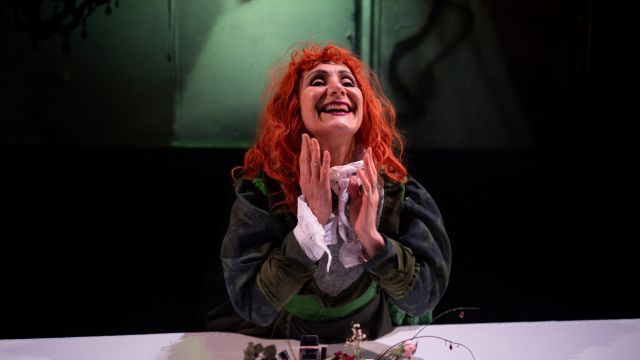Day After Terrible Day
In the Theatre Works foyer, a couple of loud, giggling party girl real estate agents (Eidan Glover and Polly Sara) invite the audience, four at a time, to inspect a beautiful house - that is, enter the theatre. We notice that they wear curious tight-fitting plastic masks like the second skins of burns victims. If we do notice, the grotesquery undercuts the hilarity.
When we do enter the theatre, uneasy, it’s a reversal of expectation and a complete change of tone. The Theatre Works performance space is a vast cavern, dimly lit by chandeliers. The bleachers are gone. There are no seats. The audience must follow the action on foot or sit on the floor, moving when necessary. A long, long banquet (?) table lines one side, a white wedding cake and wilting flowers across its top. Huge screens show montages of weddings - or a wedding - at which something has gone very wrong. Dismayed, betrayed faces are juxtaposed with images of dying flowers, insects and rotting food. The video artist is Chris Bennett. At the far end, a ladder, on which there is another woman (Deborah Leiser-Moore), in a wedding dress, distressed, disoriented. She climbs up and down, accusing someone unseen of leaving her, of lying. ‘You said you’d be here… you promised…’
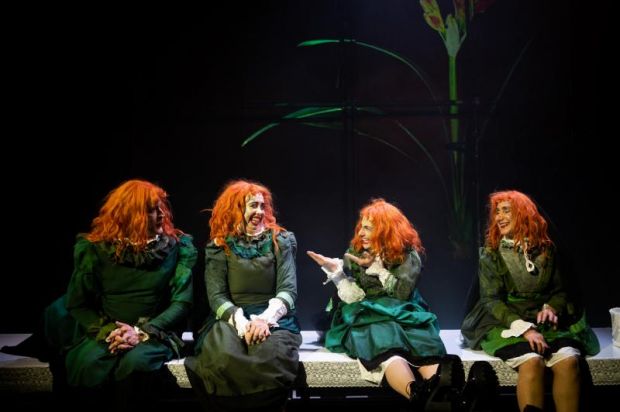
After skilful lighting changes (the excellent, intricate design is by Ben Hughes) we find the estate agents and the woman on the ladder with a Narrator (Chris Beckey), all four now in green, black and grey Victorian era costumes. We understand - perhaps - that the four represent One - one Woman, one Abandoned Being. The Narrator reads us to us, like a fairy tale, the sad story of a grand house where plans and promises were made - only for all the joyful hopes to be inexplicably and irrevocably dashed.
Here is a story - or variations and permutations on a story - of abandonment, loss, despair, madness, decay, and living death. This amalgam - or ‘mash-up’ as the program has it - of theatrical forms is based on, or takes off from, the true story of Eliza Emily Donnithorne, jilted on her wedding day, without warning or explanation, and found dead, still in her wedding dress thirty years later, the wedding feast untouched, mouldering into dust. Dickens’ Miss Havisham springs at once to mind - as do other references and reminders, intentional or not: for instance, Cocteau’s Beauty and the Beast, the erotic fantasies of Walerian Borowczyk, or the dark tales of Edgar Allen Poe. Although these touches, which may be purely subjective, point to Day After Terrible Day being, in fact, rather timid, or reticent about its explorations.
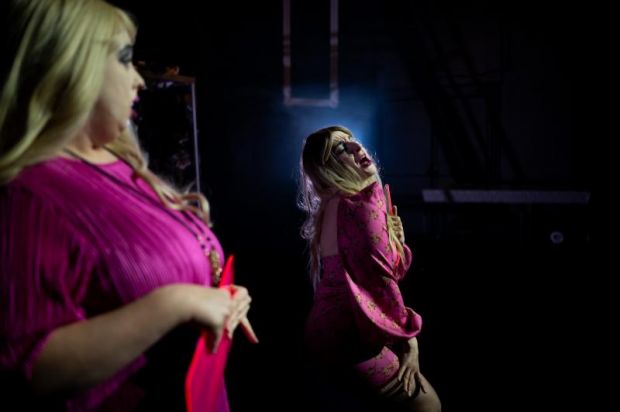
There’s a duologue (one of several and in all of which the two voices together mean that two thirds of the words are lost) describing sex, fellatio in particular, that is funny, and we might guess it’s telling us how much Woman sought to please the man who abandoned her, but it is isolated, without context. Perhaps, as a group devised show, director (and designer) Stephen Mitchell Wright faced the difficult task of balancing his collaborators’ contributions and melding them into a coherent whole.
As the show rolls on, employing monologues, duologues, stylised movement, dance, costume changes, and the ever-present, powerful video images, there’s the niggling feeling that there is an arbitrary form to the show - one segment after another - and that those segments, albeit with different means, are saying the same thing over and over. The jilted Woman sank into grief… And then? Someone near me muttered (reasonably), ‘Oh, get over it!’
Some elements or segments feel as if they are included for their own sake. Others simply made no sense - at least to me. When the masks are peeled off, are we to think that now the real Woman is revealed? But it makes no difference. These elements point to an uncertainty of purpose or position on the subject (if that is the subject) of female grief.
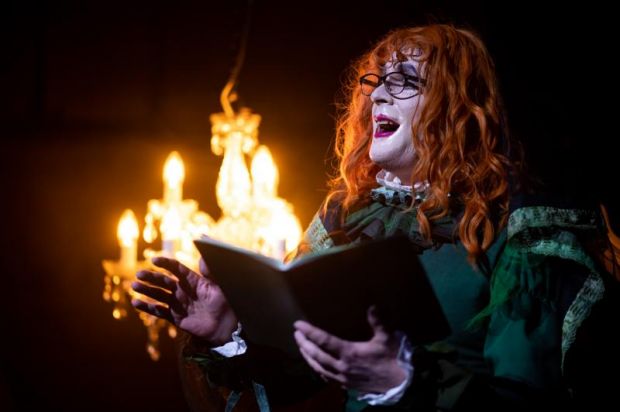
At one point, a male voice comes from speakers telling the Woman the usual cliches about ‘moving on’ and stopping ‘obsessing’. Is Day After Terrible Day an exploration of female grief, or a critique of female grief - of the total abasement of the female in the patriarchy, dependent on the love object without whom there is nothing but pain, insanity, and death?
At another point, some of the performers try to escape. Our hearts lift as we see light beyond the doors, but each time the would-be escapee is forcibly held, dragged back by the others, and the doors are shut. Is this a ‘women beware women’ note? That is, that other women will actively prevent an escape from the trap of misery?
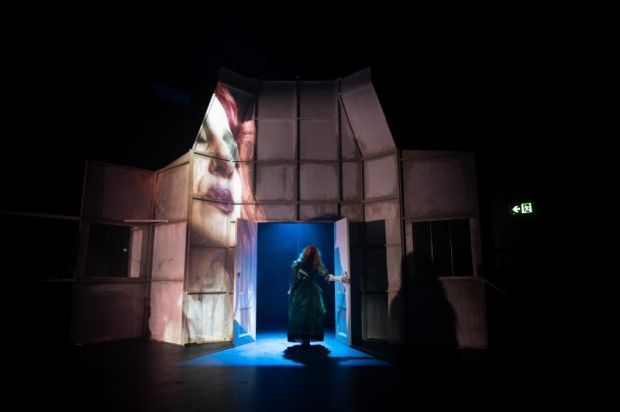
There is no doubting the imagination, the sincerity, courage, and hard work that Danger Ensemble have put into all this, but these uncertainties have the effect of making the show’s seventy minutes seem much longer. I sensed, towards the end, a restlessness, and an impatience, for it all to be over. We’ve got it, we’ve understood, or we think we have, what you have to say. Mitchell Wright, in his director notes, says that, during the show’s development, ‘we try not to second guess or endgame [sic] the audience experience.’ Could that be a problem? Is that what makes Day After Terrible Day just a bit opaque and self-regarding?
Michael Brindley
Photographer: Morgan Roberts
Subscribe to our E-Newsletter, buy our latest print edition or find a Performing Arts book at Book Nook.

